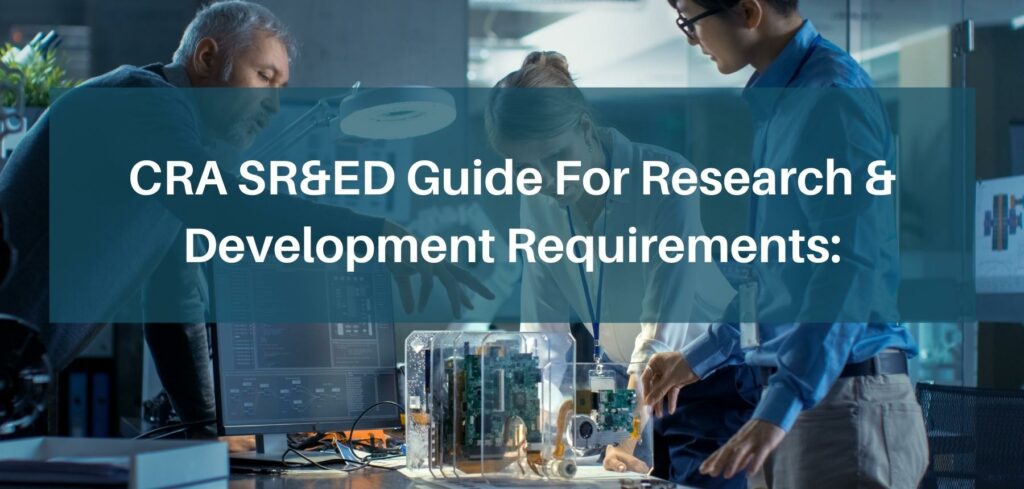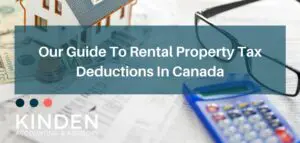SR&ED (or SRED) stands for scientific research and experimental development. It is the Canadian federal government’s scientific research and experimental development tax incentive program for businesses. Financial organizations can get research and development tax credit, or SR&ED credits for conducting scientific research and experimental development in the line of their business activity.
What are the Main Goals of the SR&ED Program & SR&ED Canada?
The main goal of SR&ED Canada with the SR&ED program is to provide SR&ED tax credits or SRED financing to businesses engaged in scientific research and experimental development on behalf of SRED Canada. Qualifying businesses can make an SR&ED claim to their SR&ED consultant to obtain SRED credits to streamline their business processes. The Canadian Revenue Agency (CRA SRED) is constantly looking for ways to enhance and streamline the delivery of its SRED tax credit services.
The information in this SR&ED guide serves the purpose of a CRA SR&ED guide for businesses looking to invest their time and efforts in the SR&ED program. Canada SR&ED has compiled information from SR&ED Alberta, SRED Ontario, and various other locations to help businesses understand the SR&ED funding procedure. Businesses can obtain SR&ED credits from investment tax credit Canada by conducting financial scientific research and experimental development in their line of business.
SR&ED funding is provided to businesses by research and development tax credit since the organization facilitates SR&ED Canada’s streamlined processes for the Canadian market. Let’s understand which businesses can qualify for SRED solutions before we talk about the different kinds of SR&ED credits, SR&ED claims, and the SR&ED funding, options available for them.
What are the Benefits of the SR&ED Tax Incentive?
Business development is fueled by innovation, and the CRA’s SR&ED initiative encourages it. The tax credit reimburses a significant amount of the expenditures of effective R&D, making it simpler to develop, test, and market future goods. As you expand your footprint into other areas, your new items may quickly change your local Canadian firm into a worldwide one.
Such enhancements aren’t just a source of competitive advantage for your company; they might also turn into stand-alone products or services, resulting in a new income stream.
SR&ED Program Business Qualifying Criteria

The SR&ED program is accessible to any business conducting research and development in Canada. Any business can be eligible for the SR&ED program and receive research and development tax credit if it performs basic research or promotes technical advancement in its specific industry. SR&ED program eligible businesses fall into three basic categories:
1. Canadian-Controlled Private Corporations (CCPCs)
A Canadian Controlled Private Corporation (CCPC) is any private organization that is completely owned and operated by a Canadian national. CCPCs can get research and development tax credit to cover SR&ED costs. The scientific research and experimental development tax incentive program for CCPCs is the most lucrative because the rate of refund is based on taxable income for the previous year.
2. Other Corporations
Other corporations can be defined as organizations that do not fall under the CCPC category. Investment tax credit Canada offers other organizations the opportunity to retrieve 20% of capital SR&ED expenses.
3. Trusts, Proprietorships, and Partnerships
Trusts, proprietorships, and partnerships can get an SR&ED tax credit rate that is 20% of capital and current SR&ED expenses.
What are Scientific Research and Experimental Development Goals?

For qualifying organizations, the aim is to incorporate these goals into their business plan. A summary of the definition of “scientific research and experimental development” according to subsection 248(1) of the Income Tax Act is:
“…systematic investigation or search carried out in a field of science or technology by means of experiment or analysis . . . to advance scientific knowledge or to achieve technological advancement.” To achieve this goal the work can be categorized as follows:
- Primary or Applied Research: The goal here is to promote scientific intelligence in a particular field of research without a direct goal of practical implementation in view.
- Experimental Research: The goal here is to research in a specific field for practical implementations of the findings. Some of the practical implementations can be to create new or improve current understanding of substances, products, commodities, and or procedures.
SR&ED goals can be divided into the following 8 categories of research:
- Computer programming
- Data collection
- Design
- Engineering
- Mathematical analysis
- Operations research
- Psychological research
- Testing
All of the experimental, primary or applied research conducted must be directly related to any one of these 8 categories. Anything which is not related to these categories may not be considered as part of scientific research and experimental development.
How Can My Business Qualify For the SR&ED Requirements?
To qualify for the scientific research and experimental development tax incentive program the research and development must be related to the above 8 mentioned categories. It will not qualify if your business is simply conducting market research based on your product or service. Your business will not qualify if it is performing routine testing of substances, ingredients, appliances, products, or electronics.
Your business will not qualify if it is investigating any of the sociology or humanities fields. A business will also not qualify for the SR&ED program if it has anything to do with exploring minerals or is involved in conventional data compilation.
The research must be an organized investigation or analysis performed in the form of an analysis or experiment. The main goal of the research or investigation must be to achieve technological or industrial progress. The research must attempt to improve on current technological
CRA SR&ED Guide For Research & Development Requirements:

The SR&ED consultant can approve your research proposal if it is an organized investigation performed in a controlled manner based on a specific subject. The main subject of the research should be a part of one of the 8 categories mentioned above. If any subject matter or research proposal is not directly a part of these 8 categories, it will automatically be rejected.
How are SRED Credits Paid?
The payment mechanism is determined by the nature and profitability of the business requesting credit. In some situations, the credits are “refundable,” meaning the government will send you a check after subtracting any taxes owed; in other instances, the credits are “non-refundable,” meaning they may only be used to lower past or foreseeable tax liabilities.
What is not “SR&ED”?
Work done by employees in this category is ineligible for state unemployment insurance benefits. This includes market research or sales promotion; quality control or routine testing of material, devices, products or services; research in social sciences or humanities; prospecting, exploration or drilling for, or production of minerals, petroleum or natural gases; commercial production of new or improved material, device or service, or the commercial use a new or improved process.
Trusted Accounting Company
Are you looking for an Accounting Company that can help guide you through these processes? Look no further than the team at Kinden Accounting to help with your project. Canadian businesses can learn more about their eligibility, the technology components, and the qualified expenditures.
*Please note that this information is only accurate as of January 18th, 2021*



